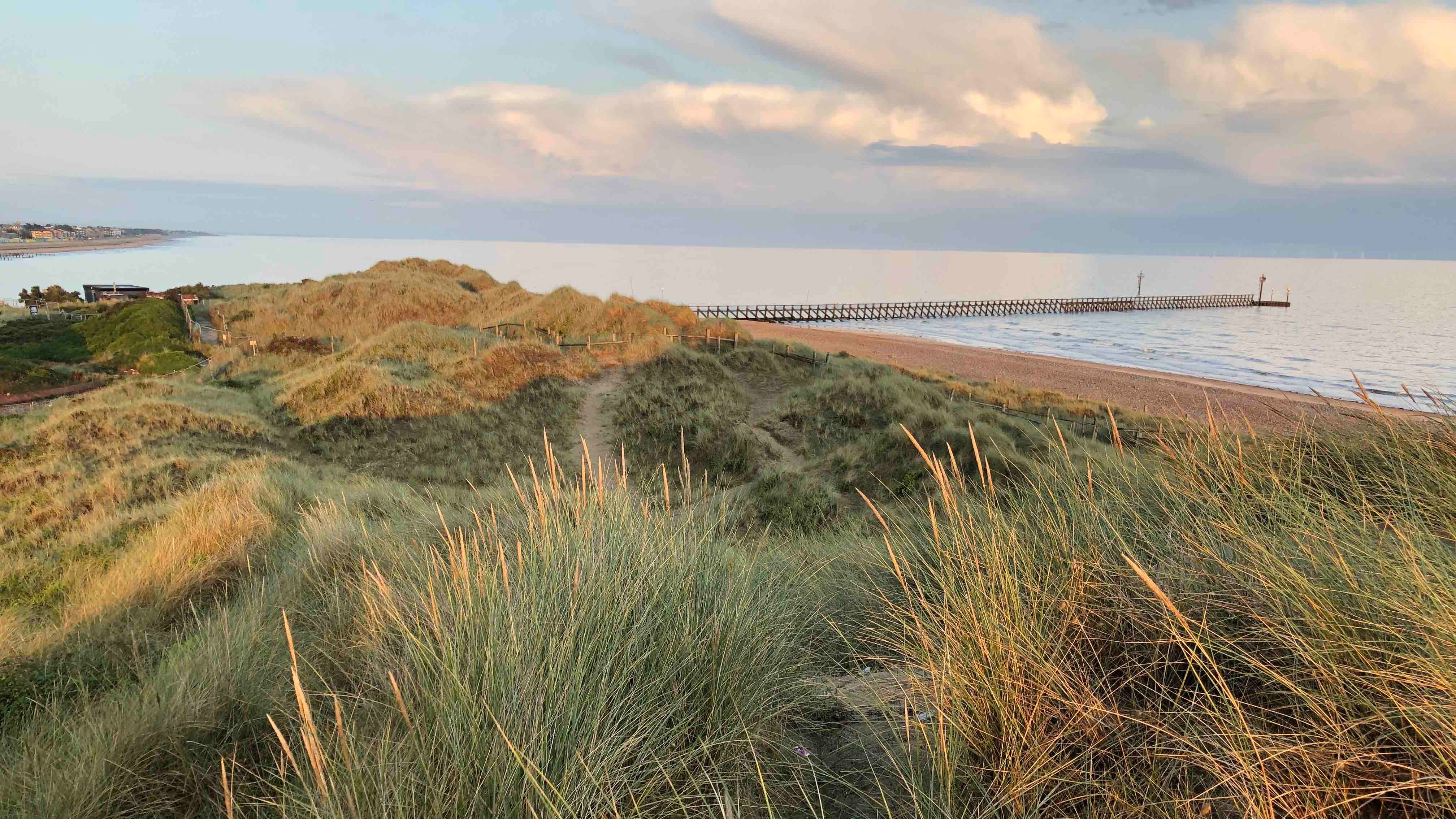In addition to SSSI area, the course is also part of the ‘Clymping Gap’, one of the last undeveloped sites along the coast between Bognor & Littlehampton, which make it a perfect haven for many varieties of birdlife, over 60 species were recorded in 2024. Although not a typical favourite of a golfer searching for a lost ball, the Common Gorse that is around the course is a vital part of the local wildlife ecosystem. Look out for its flowers in its peak flowering time of April and May. Several bird species take shelter in gorse bushes as they are so dense and provide great protection during harsh weather. Gorse flowers are a good source of nectar for bees and butterflies. As gorse’s flowers are so fragrant, and edible, they are the perfect addition to salads or steeped in fruit tea.
The shrubs to the right of the 17th & 4th holes, seen cowering over due to the prevailing wind are Cotoneaster, a variety of Rose. It’s prolific red berries in Autumn, together with its dense structure offer food & shelter from the elements. In return the birds & wildlife help it to propagate through seed dissemination.
Bordering the rife and at some of the drainage ponds, for example behind the 8th tee, reedbeds offer wildlife a transitional habitat between the coast and land where they are safe & secure. It creates vital breeding grounds & also roosting & feeding sites for many migratory species.
